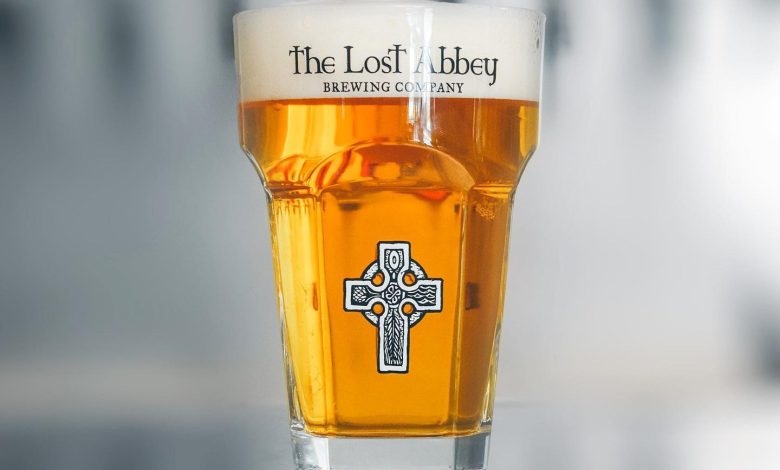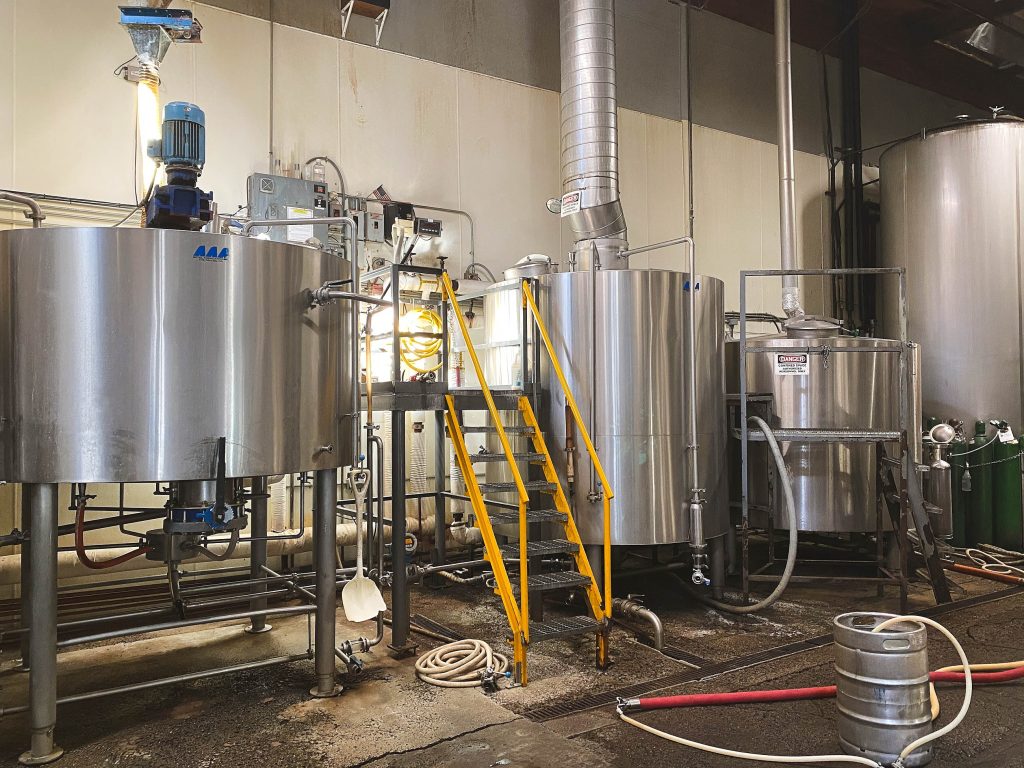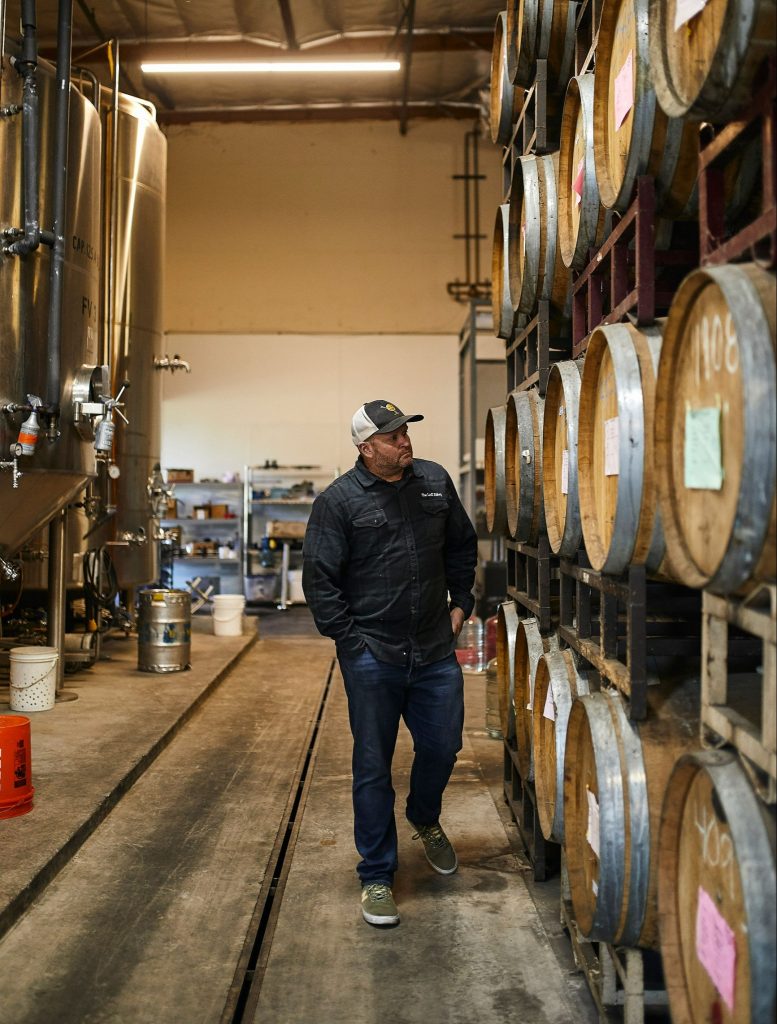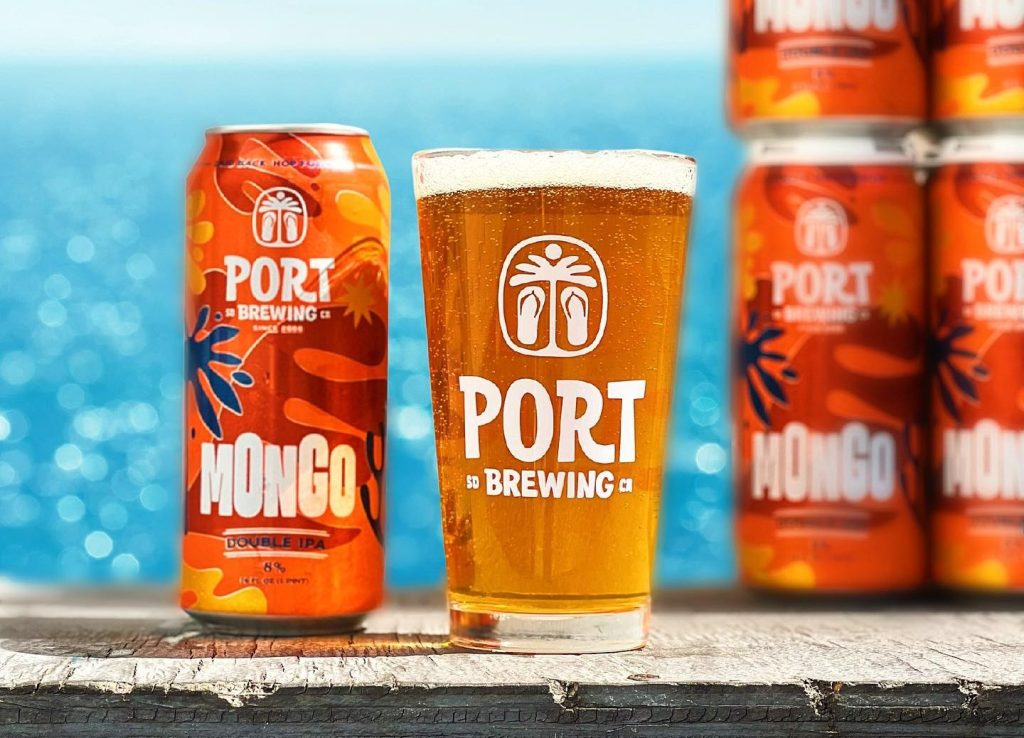
Over the past 16 years, few brewing companies have received as much critical acclaim for their overarching brewing prowess as San Marcos’ The Lost Abbey. Considered by many as one of, if not the best American producers of barrel-aged Belgian-style sour ales, and regarded as one of San Diego’s finest producers of West Coast IPAs even in a county awash in lupulin-laced brews from more than 150 local breweries, it’s a world-class operation through and through. But even the most heralded businesses must make adjustments when faced with changes in consumer preferences and a challenging economic climate, which is why the team behind The Lost Abbey is shifting its game plan dramatically, opting to get smaller, and do so quickly.
“My partners and I understand that our future is great, but we’ve got to get smaller in many areas of our operation. It’s hard to mow the lawn with a tractor when a standard walk-behind model is better. Sure, it’s doable…but not really effective,” says Arthur. “So, with this in mind, we’re announcing our intention to grow down. Growing down isn’t about less beer. It’s functionally about less space, mitigating overhead and gaining control of costs.”
To accomplish this, The Lost Abbey is putting its 30-barrel brewhouse (pictured below) and fermentation tanks up for sale so that they can switch over to a smaller brewing setup with single- and double-batch flexibility as well as a cellar fit for their current and projected output. Additionally, the company’s lease is up for renewal in 2023. The company currently has a total of 40,000 square feet at its disposal but will not re-up its entire footprint.
“We still believe in the craft-beer industry and in what we do and produce. This is about making the right amount of beer so our artistry stays true, not pursuing things we’ve never done before or deviating from what we’re known for,” says Arthur. “When we started out, there weren’t many 30-barrel brewhouses available, and those who were operating them were chasing long-term growth. Looking back, we were oddly built for a start-up operation, and it’s likely we’ve always had too big of a brewery.”

It was 2005 when Pizza Port founders Gina and Vince Marsaglia got behind one of their most talented and ambitious brewers in a big way, teaming with a handful of business partners to fund establishment of an offshoot beermaking operation dubbed The Lost Abbey. The vision of forward-thinking brewer Tomme Arthur, it was designed as a two-tiered interest that would produce West Coast IPAs and Americanized versions of English-style ales similar to those Pizza Port was already known for through its family of brewpubs, along with a new portfolio of Belgian-inspired beers packaged in continental, corked-and-caged bottles. The latter would include a variety of barrel-aged offerings, including sour, wild and strong ales, highlighted by Arthur’s iconic Flemish-style red ale, Cuvee de Tomme, a legendary but then hard-to-come-by specialty lauded by the likes of famous beer journalist Michael Jackson.
Establishment of The Lost Abbey and its sister brand, Port Brewing, was officially set into motion when the heads of Stone Brewing reached out to the Marsaglias about taking over their original headquarters in San Marcos. After a decade in their 7,200-square-foot industrial suite, they were moving on to a newly constructed, gargantuan comb -production brewery and restaurant in Escondido equipped with a company store, second-story mezzanine and expansive, majestically landscaped outdoor area. They were excited for the next chapter as well as the prospect of Pizza Port, one of their closest craft-beer allies, utilizing their former home and the equipment within for their new venture.
“Needless to say, craft-brewing was still in a very nascent stage, but we could see the path to a very bright future,” says Arthur. “We signed an asset purchase agreement for the equipment and the space. Stewardship of the building has been ours alone since then.”
The Lost Abbey opened its doors in 2006 and quickly earned a stellar reputation, not only for quality but top-level technique across a wide breadth of styles. As expected from a business with roots tracing back to Pizza Port’s resin-sticky family tree, its hop-forward beers were of the highest caliber, but so, too, was its Belgo stock of farmhouse, Trappist-style and barrel-aged sours, three of which (including the Cuvee de Tomme) took gold and silver medals at the 2007 Great American Beer Festival, earning The Lost Abbey and Arthur Small Brewery and Brewer of the Year honors straight out of the gate.
Similar industry and beer-competition accolades followed. This upped The Lost Abbey’s prestige and demand for its beers, allowing the company to grow. Over the years that followed, cellar capacity was increased along with The Lost Abbey’s inventory of barrels used for its now proven and acclaimed oak-aging program.

All of that growth required space, and over the past decade-and-a-half, Arthur and company have taken over numerous suites abutting their original base of operations, knocking down walls and reconfiguring spaces to meet their needs. Today, the company controls all eight of the suites in the building they started out in and, at one time, leased space in a separate building across their parking lot, which housed barrels, foeders and offices.
Through it all, the company remained popular and its beers were—and still are—some of the most coveted in the nation. This is particularly true of barrel-aged sours, stouts and barley wines, which continue to fetch large amounts, both during initial purchase and secondary sales online. And while Belgian-style ales are no longer as fashionable as in their heyday of 2011, the company has introduced additional sub-brands to launch new products such as a hazy IPA, fruited Brett beers, assorted pilsners and hard sparkling teas, while also adding adjuncts to its imperial stout, Santa’s Little Helper. Those additions have been largely well received.
Each and every time we were given the opportunity, we upgraded with larger tanks and built the brewery out to handle 25,000 barrels of wort-production annually. At no point in time did we ever purchase single-batch-sized tanks. We built the brewery with scale and volume because that’s what breweries do. They grow up. That’s how things go when you’re growing up. You keep expanding.”
Tomme Arthur, Managing Partner, The Lost Abbey
Or at least that’s what breweries used to do. Over the past several years, the industry has changed dramatically, with consumers overwhelmingly supporting smaller, hyper-local breweries in favor of larger companies with widespread distribution and placement in grocery stores and other retail outlets. This has made it difficult, even in the craft-beer Mecca of San Diego County, for bigger concerns like the aforementioned Stone to compete as they once did. Despite quality products and a devoted longtime fan base, the quarter-century-old company fell into serious debt, leading to a decision to sell to Sapporo USA in June. That followed the late-2021 acquisition of Green Flash Brewing by Canadian cannabis company Tilray following years of declining sales for the 19-year-old Mira Mesa-based business. And even after closing locations outside of Southern California, financially reeling Point Loma-based Modern Times Beverages ultimately failed and was forced into a court-ordered receivership auction that saw it purchased by Maui Brewing earlier this year.
While The Lost Abbey has a big reputation, distributes its beers to half-a-dozen states and has the capabilities to produce 25,000 barrels of beer per year, Arthur reports the company is nowhere near as large as it may seem from the outside looking in. So, it’s not struggling like grand-scale operations that find themselves overextended or grappling with waning sales figures. But at no point has the company come anywhere near maxing out its facility. Production of beers in The Lost Abbey’s portfolio accounts for 2,000 barrels a year. When coupled with beers from the Port Brewing plus sub-brands The Hop Concept, Tiny Bubbles and Khárisma, annual production tops out at around 8,000 barrels. The company’s best-selling beer continues to be Mongo, a double IPA that accounts for over 35% of total output, and earlier this year, Pizza Port Brewing made adjustments in order to shift production and canning of Mongo over to its manufacturing facility in Carlsbad’s Bressi Ranch development.

So, The Lost Abbey is smaller than one might think…but it’s still far too large for the current market. As a result, like many brewery owners adjusting to a changing industry while still recovering from the ill effects of a pandemic that’s not yet over and dealing with inflation and record-high input costs (goods, materials, wages, utilities), as they contemplate a potential recession, The Lost Abbey’s decision-makers are taking a hard look at the company and decided a less-is-more strategy is best to help ensure its longevity.
“Internally, we are working on scenarios for being more efficient in our brewing operations. Volume beers can be produced by our sister company and unique small-batch offerings will remain the essence of what we have always done here in San Marcos,” says Arthur. “My partners and I feel there might be someone out there who has a need for a well-appointed 30-barrel turnkey brewhouse, so we’re looking outward.”
While The Lost Abbey’s leadership team figures a proven system like theirs will provide a dependable solution for another existing or new brewing company, they say that if they are unable to negotiate a sale for any reason, they will still be able to utilize it, albeit at a lower level of efficiency, while still cutting down the company’s existing footprint. The goal on that front is to reduce it by half to 20,000 square feet. Such downsizing will not apply to The Lost Abbey’s trio of satellite tasting rooms, which includes “The Confessional” in Cardiff-by-the-Sea, “The Sanctuary” in San Elijo and “The Church” in downtown’s East Village neighborhood.
“There are many steps on the path to getting smaller, but the first one is for us to announce that we have an amazing brewery which we love, but in reality, is just too big for our future finished-beer volumes,” says Arthur. “Much like in 2005 when Stone approached us and said they had a great opportunity for us, here we are doing the same thing.”
Interested parties can click here to email The Lost Abbey about this opportunity.
The Lost Abbey / Port Brewing is located at 155 Mata Way in San Marcos

